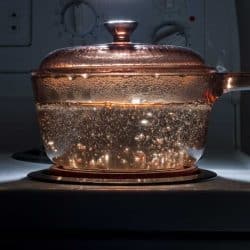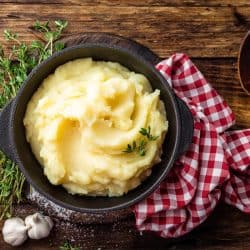Discovering the correct cookware for the culinary task is an essential part of the cooks' journey. Using the best cookware option for the recipe sometimes will turn an ordinary dinner into something extra special. If you are a home cook, you may have wondered which pots are the best for boiling potatoes? We've researched this question and have constructive culinary advice to share with you!
Selecting a quality stainless steel stock, soup, or pasta pots are excellent options for boiling potatoes. Because these pots have plenty of room for bulky potatoes to cook evenly and the materials will not change the natural flavors of the potatoes. The following pots have been tested and rated by home cooks and professionals as the best for boiling potatoes and other vegetables.
- Cuisinart stockpot
- IMUSA stockpot
- Tramontina pasta pot
- Le Creuset stockpot
Please avoid using any aluminum pots; those will negatively affect the flavor of the potatoes and cause discoloration, which is less than appetizing.
If you are a home cook interested in learning more about how to boil potatoes? Perhaps it is time to invest in a new cooking pot, and you're looking for advice? Maybe you have wondered how to prepare potatoes in a microwave? Please continue reading this post; we have plenty of helpful information to share with you!
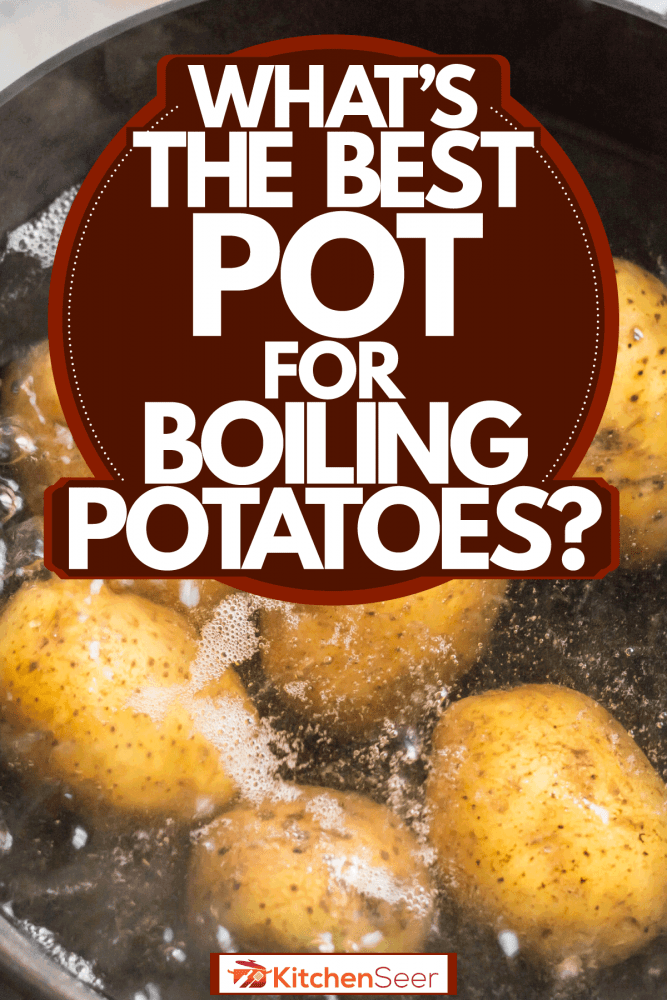
The best pots for boiling potatoes
The pots most helpful in boiling potatoes or other vegetables are large six-cup or more stock and soup pots. Because these sizes are large enough to cook the potatoes evenly, if they are crammed into a small pot, the potatoes will not cook evenly due to uneven heat distribution.
Click here to view the six-quart Cuisinart stock pot at Amazon.
Why choose stainless steel cookware?
Selecting pots that are stainless steel is paramount for cooking the best-tasting potatoes possible. Aluminum pots will negatively impact the flavors of the potatoes. The reason being, boiling for several minutes, the aluminum will leech into the potatoes, giving them a metallic flavor and discoloring the potatoes with hues of grey of sallow yellows. Suppose you are looking for a durable 100% stainless steel stockpot with ample room for large batches.
Click here to view IMUSA stainless steel stockpot at Amazon.
Stainless steel pasta pots add a bit of convenience with the accompanying strainer lid that was designed for draining pasta. This feature works great for potatoes or other vegetables. Wear oven mitts when draining foods; with this feature, droplets of boiling water drip and spray from the lid quite easily.
Click here to view Tramontina Lock & Drain Pasta Cooker Pot with Strainer Lid at Amazon.
Enamel cookware options
Enamel stockpots work well for boiling potatoes because the enamel is naturally a non-stick material that ensures food won't get stuck to the sides of the pots. Word of advice-- if you choose to make mash potatoes transfer the potatoes to a bowl for mashing; using a potato masher or hand mixer could chip the enamel coating. Although the enamel is considered non-toxic, bits of the pot chipping off will reduce its aesthetic appeal.
Click here to view Le Creuset's stockpot at Amazon.
Interested in learning more about the array of different types of pans and pots on the market? Click here to read our article that details the various aspects of cookware.
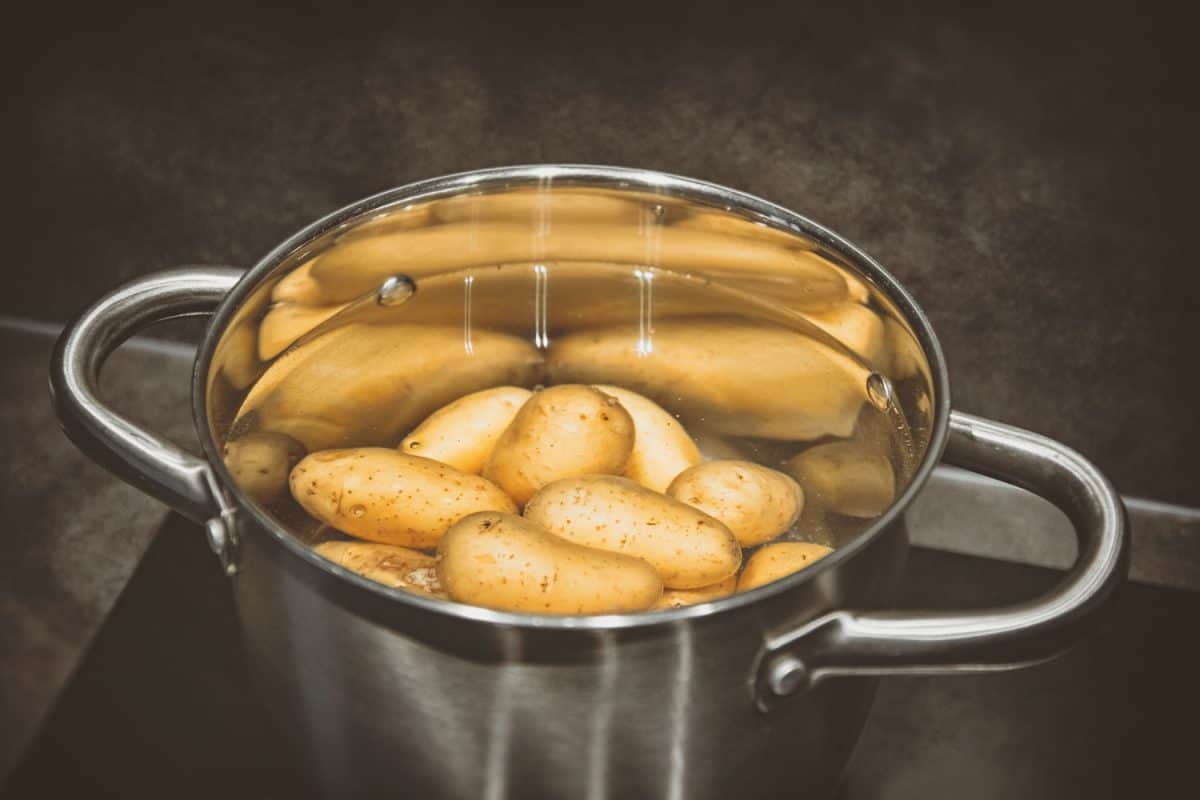
Can you boil potatoes in a stockpot?
Yes, boiling potatoes in a stockpot are one of the most frequently used methods. Preparing potatoes with this method requires only the most basic cooking skills. First, thoroughly scrub your potatoes to remove any dirt, and then cut the potatoes into halves or quarters depending on the intended recipe.
Next, place the potatoes into the stockpot and cover the potatoes generously with cold water. Add 1/2 teaspoon of salt for taste. Turn the burner up to high until the pot starts to boil, then reduce the temperature to medium-low or low. Then, place the cover onto the pot. Allow the potatoes to cook in lightly boiling water for 20-25 minutes. Use a fork to check the potatoes' level of tenderness. When the potatoes are cooked thoroughly, the fork should poke through easily.
Perhaps you are wondering how long to boil potatoes based on size or recipe. Click here to read our article that expounds on this topic in detail.
How do I boil potatoes without a cooker?
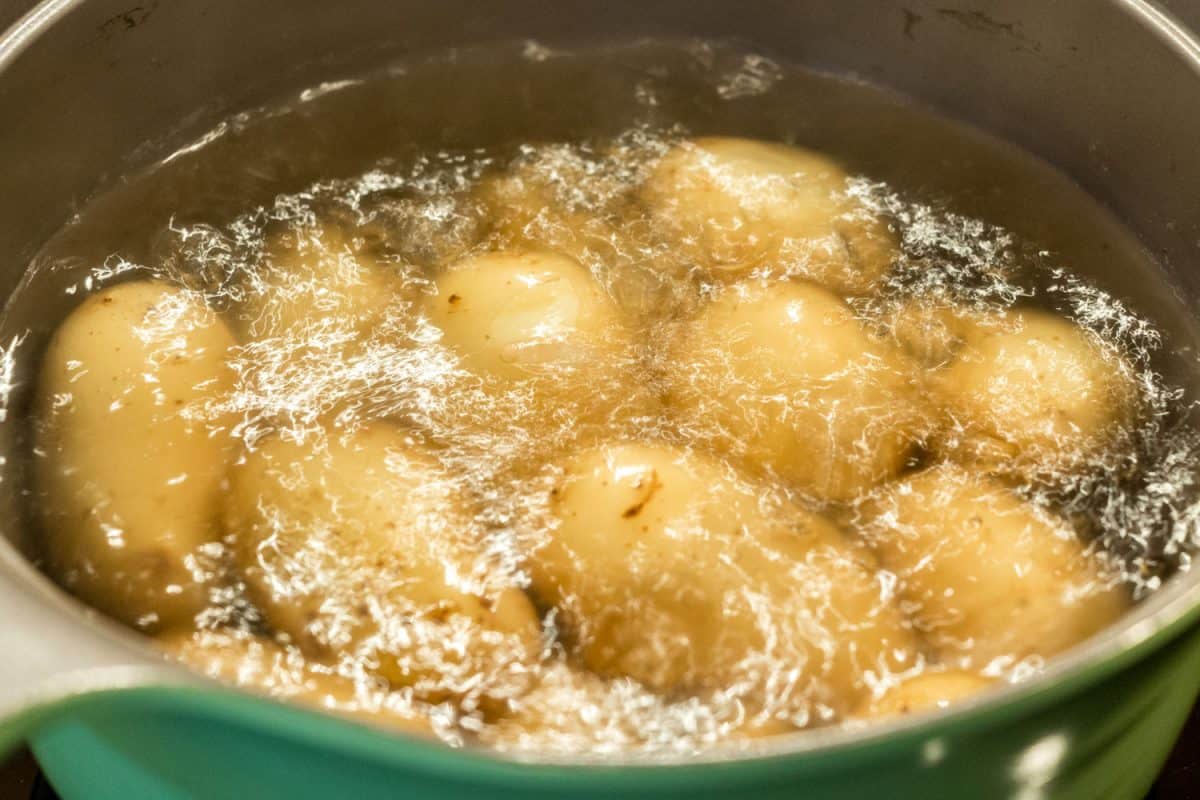
There are a couple of tried and true options for preparing potatoes without a cooker. First, the most popular method is using a conventional microwave. Fast, easy, and the best go-to if pressed for time--many busy caregivers and parents who care for impatient children utilize this option.
Boiling potatoes in a microwave
According to the Food Network, start by choosing a size-appropriate microwave-safe container with a lid. Next, place your washed, peeled, and cut into cubes or quarters potatoes into the container.
Click here to view a BPA-free vegetable scrubber at Amazon.
If you prefer to boil the potatoes whole, be sure to poke holes throughout each potato with a fork. Word of caution-if the potatoes are microwaved without punctured holes, they will explode inside the microwave and could cause painful burns for the cook.
Next, pour water over the potatoes and check that all potatoes are covered with 1/2 inch of water. Cover the container with a lid or plastic wrap. Then, place it in the microwave on high or medium-high for two-three minutes. Check the consistency of the potatoes with a fork if they are still too hard, microwave for an additional two minutes, and recheck. Always wear oven mitts when handling boiling potatoes.
Click here to view professional-grade silicone oven mitts at Amazon.
Preparing potatoes with a crockpot
Using a crockpot is another option that does not boil the potatoes; but, it will produce the same tasty results- cooked tender potatoes.
First, plug the crockpot in and set it at the low setting. Next, place your washed, cut to desired size potatoes into the crockpot, and pour hot water or broth over the potatoes. Ideally, an inch of water over the potatoes is best. Cook the potatoes on low for six-to-eight hours. Check with a fork for tenderness. Pour any remaining water off the potatoes and drain them in a colander.
How to boil potatoes quickly?
One of the most popular methods for boiling potatoes quickly is using an electric kettle. First, fill the kettle with water and turn it on. While the kettle is heating, wash, and cut the potatoes into small cubes or quarters. Place the potatoes into a stock or soup pot.
Once the water is boiling, pour the water over the potatoes. Turn the stove burner on medium, and allow the potatoes to cook for about ten minutes. Check the potatoes' tenderness with a fork. If they are still a little hard, allow them to simmer covered for another two-five minutes and recheck.
How long does it take to boil potatoes without a cooker?
The amount of time required varies depending on the cooking medium used, the size of the potatoes, if the peels were left on or removed, cubed versus whole. Each of these factors will slightly change the amount of time required for boiling. Generally, most potatoes cooked on a stovetop need approximately 3o minutes to cook thoroughly.
Preparing potatoes in a microwave usually takes between three to seven minutes, depending on the size of the potatoes and the microwave's power settings. Older microwave models could take up to ten or more minutes; new models could require three to five minutes. Microwaving is the quickest method without a traditional cooker.
The crockpot cooking method requires six to eight hours on the low setting before the potatoes are fork-tender. The time allotment could be lessened if the potatoes were cooked on a medium or high heat setting.
Tips and suggestions for boiling potatoes
- Leave the peels on to help the potatoes maintain their natural shapes.
- Boil the potatoes in filtered water to avoid a chlorine flavor.
- Add a 1/2 teaspoon of salt to each batch for flavor enhancement.
- Instead of water, boil the potatoes in broth for a more robust flavoring.
- Drain the potatoes in a colander to remove the water easily.
- For cubed potatoes, try to cut them as similar in size as possible for even heat distribution.
- Always poke holes into the potatoes if whole before placing them in the boiling water or the microwave.
- Do not add salt to the water if on a low-sodium or reduced-sodium diet.
- Always wear oven mitts when handling boiling water and hot potatoes.
In closing
Potatoes are a comfort food staple that requires minimal cooking experience or equipment. The methods covered in this post will surely keep you and your family well-fed and prepared to tackle any potato-centric recipes. We hope this article has helped you select the perfect pot for your kitchen's cookware collection. Please visit Kitchenseer.com soon for more relevant culinary advice! Happy cooking!







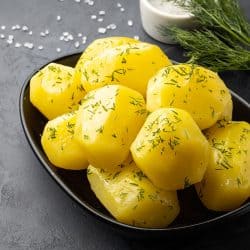
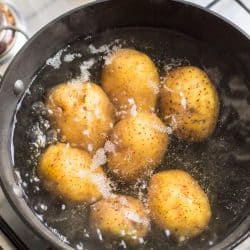
![Evenly cut salad potato with mayonnaise and garnished with green onion, How Long To Boil Potatoes [By Type Of Dish]](https://kitchenseer.com/wp-content/uploads/2021/02/Evenly-cut-salad-potato-with-mayonnaise-and-garnish-with-green-onion-250x250.jpg)

